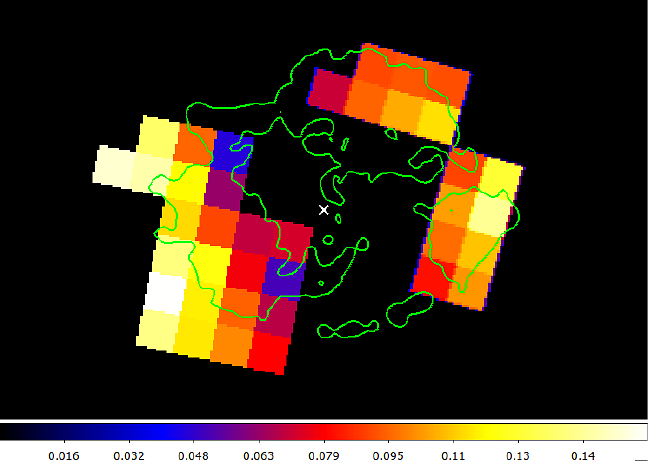Dynamics of the intermediate-mass-element ejecta in the Supernova Remnant Cassiopeia A studied with XRISM

Dynamics of the intermediate-mass-element ejecta in the Supernova Remnant Cassiopeia A studied with XRISM
Shunsuke Suzuki, Haruto Sonoda, Yusuke Sakai, Yuken Ohshiro, Shinya Yamada, Manan Agarwal, Satoru Katsuda, Hiroya Yamaguchi
AbstractSupernova remnants (SNRs) provide crucial information of yet poorly understood mechanism of supernova explosion. Here we present XRISM high-resolution spectroscopy of the intermediate-mass-element (IME) ejecta in the SNR Cas A to determine their velocity distribution and thermal properties. The XRISM/Resolve spectrum in the 1.75-2.95 keV band extracted from each $1' \times 1'$ region in the southeast and northwest rims is fitted with a model consisting of two-component plasmas in non-equilibrium ionization with different radial velocities and ionization timescales. It is found that the more highly ionized component has a larger radial velocity, suggesting that this component is distributed in the outer layer and thus has been heated by the SNR reverse shock earlier. We also perform proper motion measurement of the highly ionized component (represented by the Si XIV Ly$\alpha$ emission), using archival Chandra data, to reconstruct the three-dimensional velocity of the outermost IME ejecta. The pre-shock (free expansion) velocity of these ejecta is estimated to range from 2400 to 7100 km s$^{-1}$, based on the thermal properties and the bulk velocity of the shocked ejecta. These velocities are consistent with theoretical predictions for a Type IIb supernova, in which the progenitor's hydrogen envelope is largely stripped before the explosion. Furthermore, we find a substantial asymmetry in the distribution of the free expansion velocities, with the highest value toward the direction opposite to the proper motion of the neutron star (NS). This indicates the physical association between the asymmetric supernova explosion and NS kick.